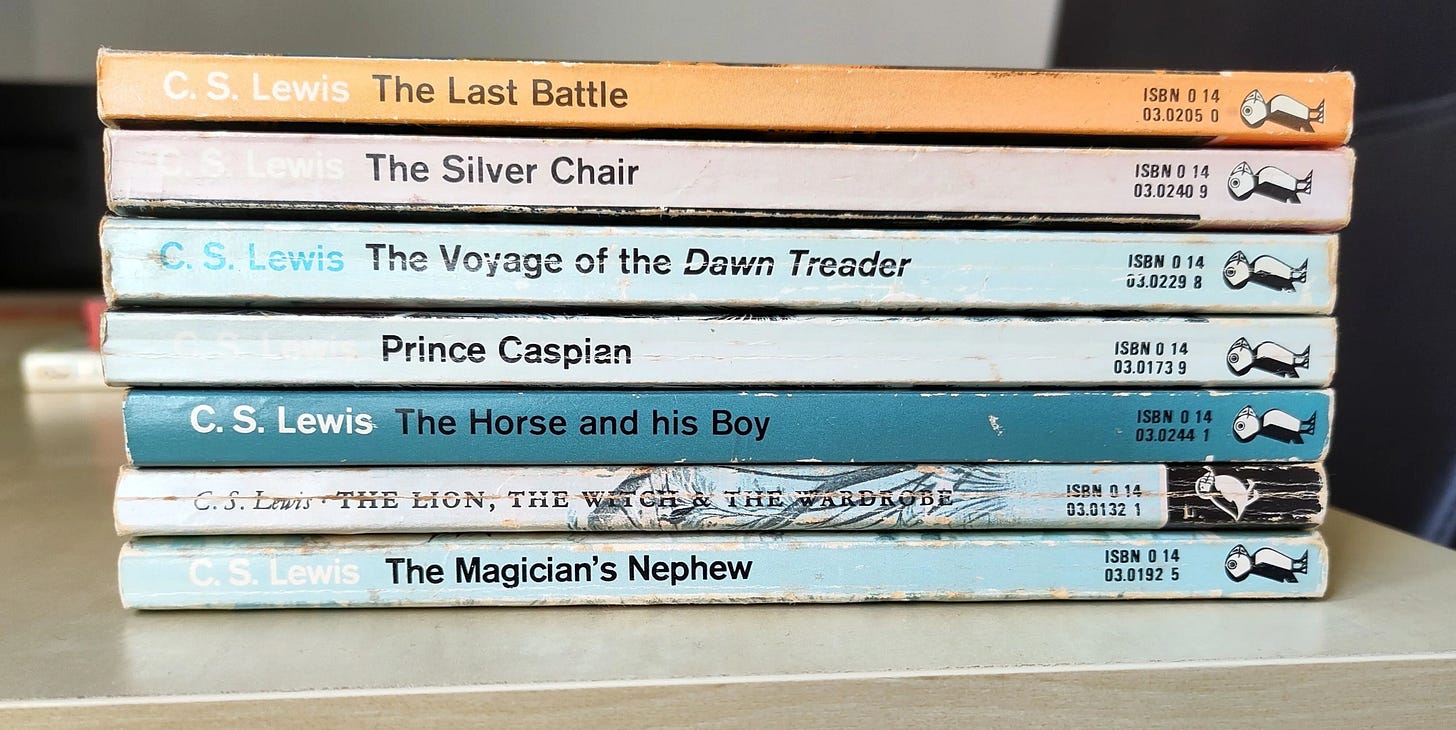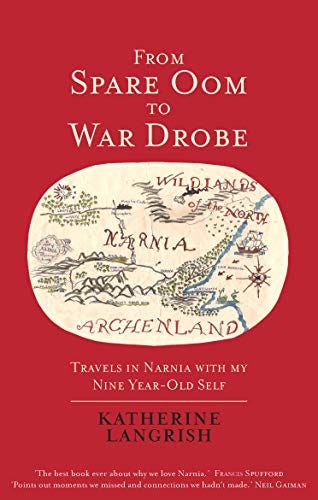Return to Narnia: prologue
This post is part of a series revisiting my favourite childhood reads.
Sooner or later, revisiting my childhood favourites was going to land me in Narnia. If I’m honest, I’d been putting it off, mostly out of fear that the magic would have gone. C.S. Lewis’ sequence of seven novels was one of the touchstones of my childhood, like every imaginative child I checked the backs of wardrobes for entrances to other worlds and internalised the stories.
Before diving into the first novel ‘The Magician’s Nephew’, (and more on the ordering later!) it’s worth stepping back for a moment. I first read the books at the age of about seven or eight. The classic BBC adaptation of ‘The Lion, The Witch and The Wardrobe’ aired in 1988 and I can’t remember whether that came first (it probably did) or whether I had already read some or all of the books in our set. Lucky child that I was, there was no need for saving up or putting them on Christmas lists, we had them already. They were on the shelf in what I now know to be Lewis’ preferred reading order:
1. The Magician's Nephew
2. The Lion, The Witch and The Wardrobe
3. The Horse and His Boy
4. Prince Caspian
5. The Voyage of the Dawn Treader
6. The Silver Chair
7. The Last Battle
This order makes sense of the internal chronology of Narnia in a way that reading them in publication order (2, 4, 5, 6, 3, 1, 7) doesn’t, although I agree that ‘The Lion, The Witch and The Wardrobe’ is the best starting point for those new to Narnia. I find that starting with the creation myth story and culminating with the end of Narnia makes narrative sense to me. Or starting with Genesis and ending with Revelation if you prefer.
Which brings us to one of the touchier subjects in the world of Narnia – the extent to which the books are a Christian or Biblical allegory. Without getting too far into that discussion at this point, it is worth saying up front that I was brought up in a church going home but I have no memory of the books being introduced to me as anything other than stories. By the age of seven or eight I would have had at least some of the mental scaffolding needed to interpret the allegorical elements, but I’m not sure I actually did so, at least not consciously. First and foremost, the books were great stories. As an adult reader, the allegory is probably something that I am more aware of but not something that I have a problem with. There will undoubtedly be some discussion of this element of Narnia as I reread each book so please consider this a content warning if you have a strong aversion to theological discussion.
Lastly, before we get to ‘The Magician’s Nephew’, I am rereading the sequence in the company of Katherine Langrish’s book ‘From Spare Oom to War Drobe. Travels in Narnia with my Nine Year-Old Self.’
Like me, Langrish also opts for the chronological ordering outlined above. She is a perceptive guide to Lewis’ world, especially its literary allusions, and her account of rereading Narnia is partly what convinced me that the magic might be safe.
I thought I would read them again, remind myself of what had once enchanted me and discover if it still had the power to do so.
Coming soon: Return to Narnia: Part I – The Magician's Nephew




Have been reading them all with my son and at the same time watching the BBC series on DVD, which despite being clunky compared to today's productions, is really faithful to the text and really does engage a 9 year old.
Oh, I am delighted to dig into this! I stumbled on your post about Prince Caspian, and decided to come back here and read them in order. I’m very much looking forward to it. I too spent my childhood in Narnia (or searching for it through stone arches and cupboard doors). Last year I bought a little stone house in Narni, the Italian city that inspired the name for Narnia. I’m turning the cellar into a bookshop called The Wardrobe. I love finding kindred spirits!